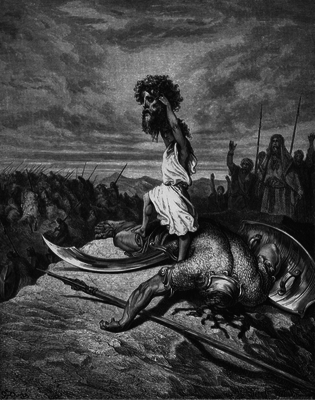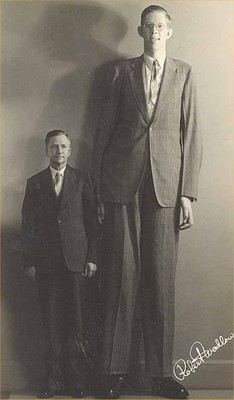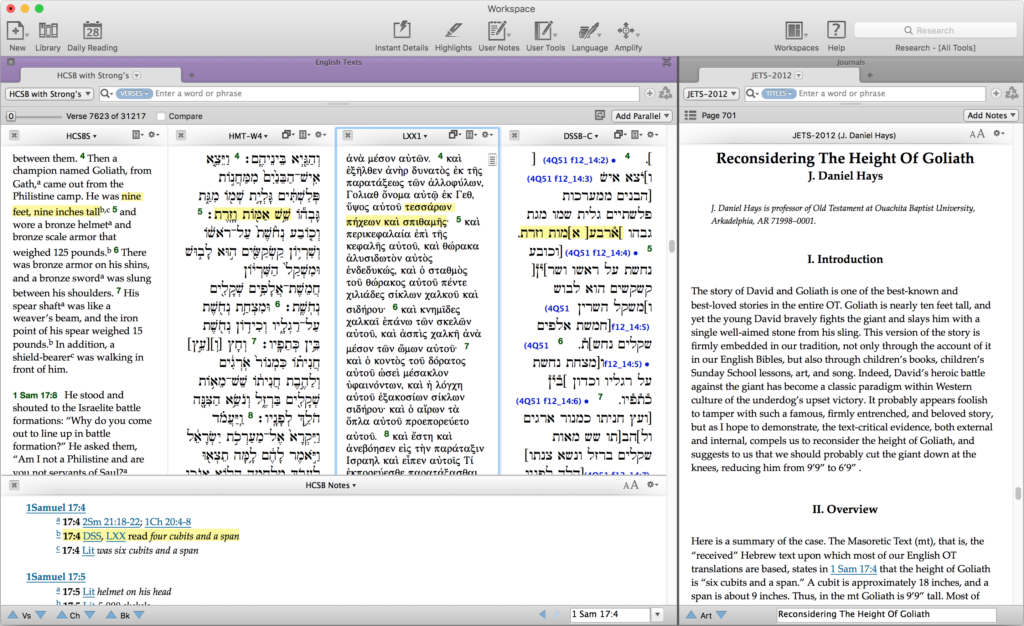 At church last Sunday, I taught from 1 Samuel 17, the chapter detailing the infamous battle between the young shepherd-boy-to-be-king, David, and the Philistine champion, Goliath. I’ve known the story since childhood. In fact, many who didn’t grow up attending religious services still know the basic story—that this young boy (probably an older teen in actuality) faced down this “giant” of an enemy and prevailed with no armor and only a sling in hand. Even today, we speak of facing down or overcoming “giants” when a seemingly impossible obstacle is before us.
At church last Sunday, I taught from 1 Samuel 17, the chapter detailing the infamous battle between the young shepherd-boy-to-be-king, David, and the Philistine champion, Goliath. I’ve known the story since childhood. In fact, many who didn’t grow up attending religious services still know the basic story—that this young boy (probably an older teen in actuality) faced down this “giant” of an enemy and prevailed with no armor and only a sling in hand. Even today, we speak of facing down or overcoming “giants” when a seemingly impossible obstacle is before us.
Right: David Slays Goliath, Gustave Doré (1832–1883) from The Accordance Gallery of Bible Art.
I’ve always been fascinated by the idea of Goliath: a giant, hulking big bad in the Bible. When I was young, I assumed David’s sling was the same as my slingshot, and I played in the backyard pretending to take down my own giants. Instead, I only managed to accidentally (really, Mom!) take out a window or two.
As an adult, I’ve occasionally pondered the size of Goliath mentioned in the Bible. In 1 Sam 17:4 the Hebrew text describes Goliath’s height as “six cubits and a span” (שֵׁשׁ אַמּוֹת וָזָרֶת). If a cubit is roughly 18 inches, and a span is roughly 9 inches, that puts Goliath at well over 9 and a half feet. I’d want that guy on my basketball team—he could dunk without even jumping!
At a height of over nine and a half feet, Goliath would have undoubtedly been seen as a “Big Unfriendly Giant” (BUG), even to modern people who are taller than our biblical predecessors. I’ve been unable to find the source, but I remember reading or hearing many years ago that the average male height in biblical times was a little over 5 feet tall. If King Saul was taller from the shoulders up than anyone else (1 Sam 9:2; 10:23), he was probably somewhere over 6 feet tall, which would have been very tall for his day, but not nearly as tall as the biblical description of Goliath.
 Consider though, in modern times, the verified tallest person ever recorded is Robert Wadlow (1918 – 1940) who stood an impressive 8 feet, 11 inches, still shorter than the biblical Goliath. Of course, Goliath was a giant right? Well, actually, that’s questionable. That is, the Bible never directly refers to Goliath as a giant other than giving us his height, which would definitely seem to fall into the “giant” category. Even though giants are mentioned other places (2 Sam 21:16, 18, 20, 22; 1 Chr 20:4, 6, 8), there’s no direct connection in those passages to Goliath.
Consider though, in modern times, the verified tallest person ever recorded is Robert Wadlow (1918 – 1940) who stood an impressive 8 feet, 11 inches, still shorter than the biblical Goliath. Of course, Goliath was a giant right? Well, actually, that’s questionable. That is, the Bible never directly refers to Goliath as a giant other than giving us his height, which would definitely seem to fall into the “giant” category. Even though giants are mentioned other places (2 Sam 21:16, 18, 20, 22; 1 Chr 20:4, 6, 8), there’s no direct connection in those passages to Goliath.
Left: Robert Wadlow standing next to his father, Harold Wadlow (source: Wikipedia)
The curriculum I teach from on Sundays uses the Holman Christian Standard Bible as its basis. I happened to notice a footnote in the HCSB to Goliath’s height that read, “DSS, LXX read four cubits and a span”—(DSS: א֯רבע[ א]מות וזרת and LXX: τεσσάρων πήχεων καὶ σπιθαμῆς). I found this very interesting because the lesser four cubits and a span would be a little over 6 and a half feet tall. If there’s no claim to Goliath being a giant, but rather just a very big imposing warrior, this lesser height would make much more sense.
Add to this that both the Septuagint and the Dead Sea Scrolls predate the Masoretic Text that the Hebrew Bible is based on by roughly a millennium, and it starts to seem as if Goliath’s height might have become a bit exaggerated over the centuries. On Monday of this week, in my post on the Göttingen Septuagint, I wrote the following as a general principle for determining a correct reading:
Often when the LXX and and Dead Sea Scrolls agree together against the 10th century Masoretic Text, the older reading is seen as more original. Thus, no study of the Old Testament can be considered truly comprehensive unless the LXX is taken into consideration…
The issue of Goliath’s height is merely one example of this principle.
Last Sunday, I internally debated as to whether I should bring up the issue of the question surrounding Goliath’s height when I taught this passage to my class at church. I try not to get too technical in regard to textual issues, usually just leaving a passage as it is in its final form. However, a 6’9″ Goliath seemed to make so much more sense to me! Plus, a shorter stature for Goliath doesn’t take away from the point that David defeated Goliath because his faith was in God and not in physical size or weapons (1 Sam 17:45) and as an example that the Spirit of the LORD was upon him (1 Sam 16:13).

Since the footnote in the HCSB gave me an opening, I went ahead and mentioned—in the most general terms—the difference in the readings regarding Goliath’s height. From what I could tell, the people in our class found it interesting and plausible, and no one accused me of “questioning the Bible” or being too technical.
In writing this post, I came across an article by J. Daniel Hays, “Reconsidering the Height of Goliath” [JETS 48 (2005): 701-715], that comes to the same conclusion. If you have the Theological Journal Library in your personal Accordance Library, I recommend checking it out.
Although 1 Samuel (1 Kingdoms) is not yet available, the Göttingen Septuagint is on sale through August 1 at unprecedented discount.

